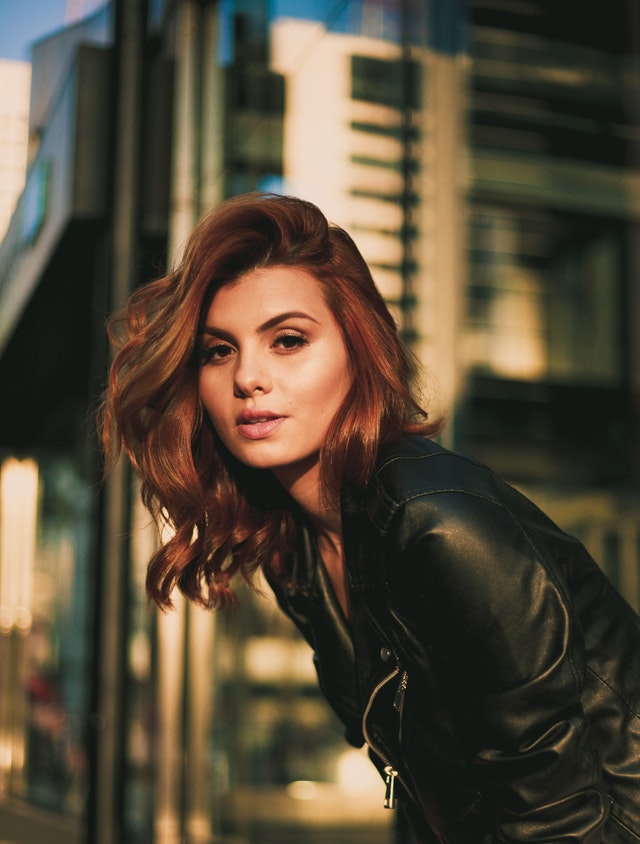Have you come across a colored leather jacket? Sure you have! Not all leather jackets feature raw, undyed leather. Rather, many of them are made of colored leather that’s been exposed to a particular dye. Dyed leather is commonly found used to create leather jackets and other garments. To learn more about dyed leather, including how it’s made, keep reading.
Why Leather Is Dyed
Leather is dyed for aesthetic purposes. In its raw form, leather is typically brown or a shade thereof. Brown leather is found in countless products, ranging from furniture and car seat upholstery to belts, trousers and of course jackets.
As you know, though, many of these same products are available in alternative colors. To achieve a different color, manufacturers dye their leather. Dyeing is a process in which raw leather is exposed to a colored, pigment-based substance, resulting in a new color. It doesn’t affect the physical properties of leather. Rather, dyeing only changes the color of leather.
Some of the most popular colors for dyed leather include:
- Black
- Red
- Yellow
- Olive
The Basics of Dyed Leather
How is leather dyed exactly? The production of all leather begins with tanning. Tanning is a treatment process in which raw leather is exposed to various chemicals, which are collectively known as a tanning agent. The tanning agent breaks down the proteins within raw leather while at the same time altering its color. Most tanning agents give raw leather a brown color. This is why brown is the most common color for leather jackets.
For brown leather jackets, no additional work is required after tanning. The tanning agent alone will give leather jackets a brown color. But leather jackets are available in other colors besides brown. For an alternative color, manufacturers must dye the tanned leather.
Tanned leather is dyed using a liquid, pigment-based dye. Manufacturers will typically submerge the tanned leather in a tub or barrel. Within this tub or barrel is a combination of water and dye. As the tanned leather soaks up the diluted dye, its color will change. The tanned leather will take the color of the dye.
After the tanned leather has been dyed, it’s usually rinsed. Rinsing is necessary to protect against bleeding colors. If the newly dyed leather isn’t rinsed, it will contain excess dye that bleeds onto other garments when worn in an outfit. Rinsing the newly dyed leather in pure water will remove this excess dye, thereby protecting against bleeding colors.
There are nuances in dyeing processes used for leather. Some manufacturers perform different techniques to dye their leather. Regardless, most colored leather is made by tanning raw leather, followed by exposing the tanned leather to a dye. The tanned leather will soak up the dye so that it changes color.

Choosing the Right Dye Color for a Leather Jacket
If you’re thinking about buying a leather jacket, you might be wondering what color to choose. Leather jackets aren’t limited to brown. For over a century, leather jackets have been made in brown leather. Raw leather has a natural brown color after being tanned. It doesn’t require any dye. Manufacturers only need to tan raw leather using a brown tanning agent to achieve this classic color. With that said, there are countless other colors in which leather jackets are made.
Black is a popular color for leather jackets. Black is a universal color, so leather jackets featuring black are easy to incorporate into your outfits. You can wear a black leather jacket with most of your other garments and accessories.
For a more modern style, you may want to choose a red leather jacket. Red leather jackets are popular among men and women alike. They are brighter and more visible than their darker-colored counterparts. But like black, red is a universal color that matches most other colors. You can’t go wrong with a red leather jacket for these reasons.
With the exception of brown, all leather colors are achieved with dye. Colored leather is made by exposing raw and tanned leather to a dye. The leather is initially tanned, after which is submerged in a tub or barrel filled with water and a dye. Since there are dyes for all colors on the color wheel, you can find leather jackets in just about any color.
How to Preserve the Color of a Leather Jacket
You should take some precautions to preserve your leather jacket’s color as well. Leather jackets can fade. Fading is the result of the dye degrading or leaching out of the leather. After being dyed, leather jackets will contain dye compounds within them. If these dye compounds degrade or leach out, the leather jacket will fade to a lighter tone.
There are several things you can do to preserve the color of your leather jacket. For starters, you should choose a high-quality leather jacket. High-quality leather jackets are less likely to fade than their cheap and low-quality counterparts. Jackets made of napa leather, for instance, are better protected against fading than those made of other types of leather. If you’re worried that your leather jacket will lose its color, you may want to consider a napa leather jacket.
You should also avoid storing your leather jacket in direct sunlight. Sun exposure can cause garments to fade — and leather jackets are no exception. If you store your leather jacket in a sunny area, such as near a window, it will soak up the sun’s ultraviolet (UV) rays while fading to a lighter tone. To preserve the color of your leather jacket, choose a dark or shaded area in which to store it.
In Conclusion
After reading this, you should have a better understanding of how leather is dyed. Most colored leather is dyed. Dyeing is a multi-step process that involves exposing raw and tanned leather to a dye. The excess dye is rinsed out, after which the leather is used to make jackets and other garments or products.

